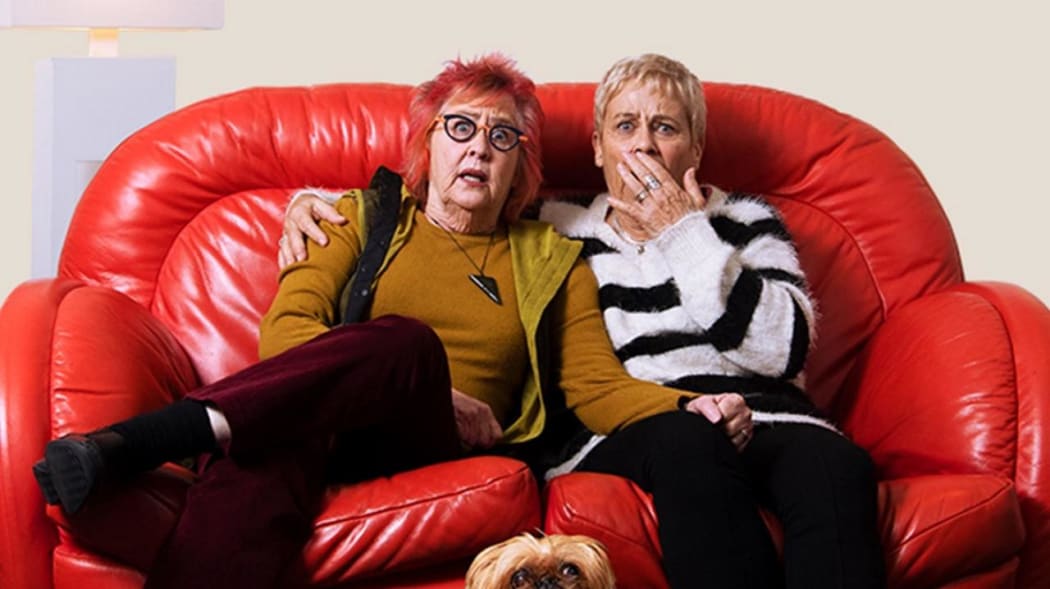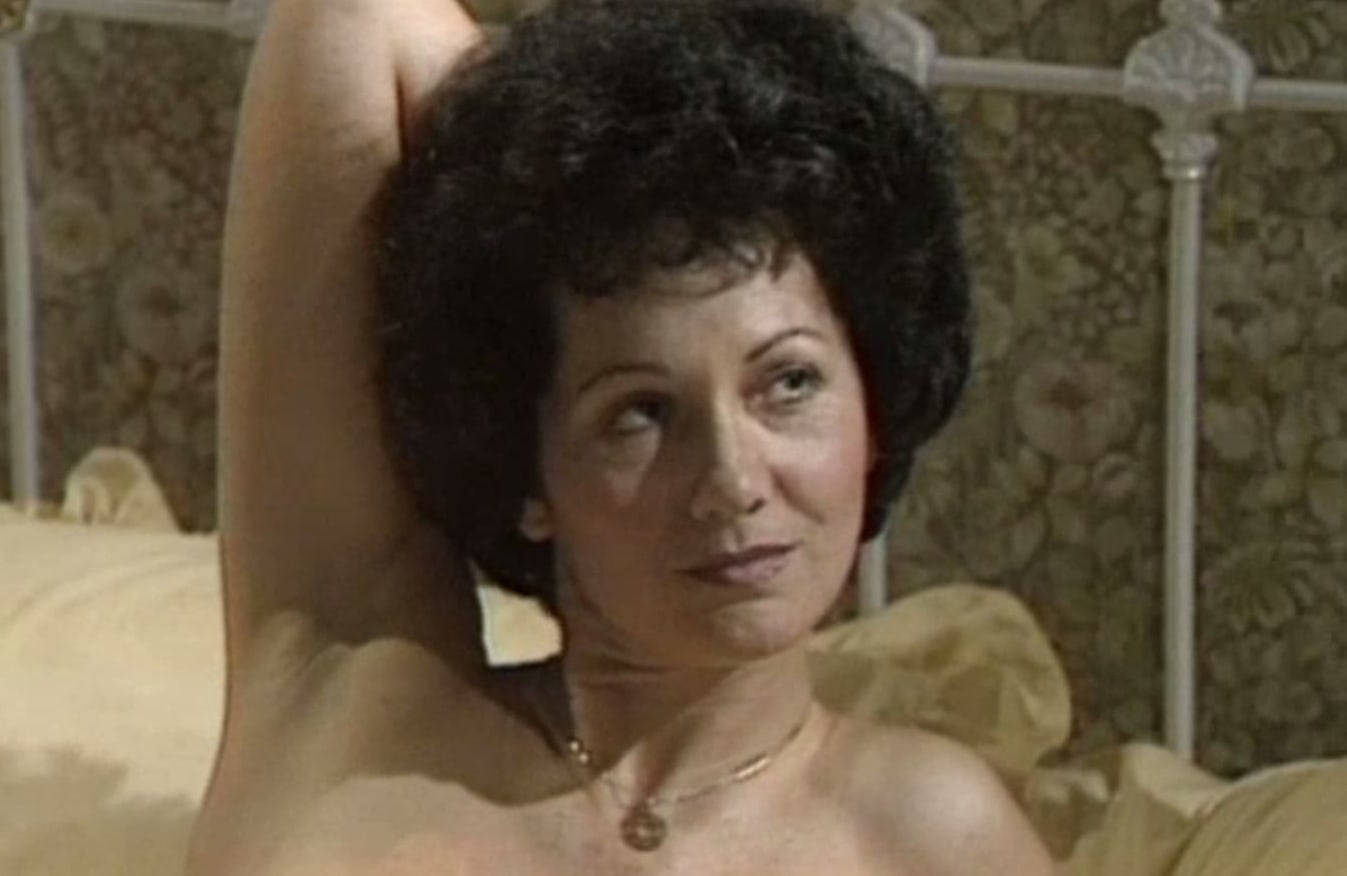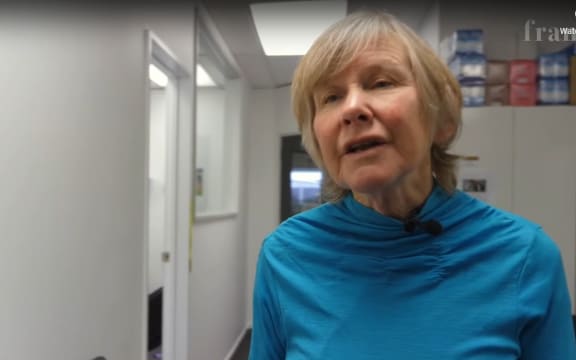Back in the day, nudity on TV was rare and the isolated sightings were almost national events. There's plenty of it available on-demand and on any device these days, but does it do us harm? The broadcasting watchdog’s been weighing that up.

Gogglebox Photo: ThreeNow
Last month Milton Wainwright was convicted of wilful damage after cutting the penis off a Māori statue on a walking track in the Manawatu Gorge.
Mr Wainwright told Newshub he and his walking companion clearly weren't prepared for the naked male form during their walk and he returned with a saw “to make it decent.”
The same day on RNZ’s Nine To Noon Kathryn Ryan looked at the controversial Deep Nude app which uses AI to simulate a nude image from any photo of a clothed person. Even fake nudity is everywhere online these days - alongside more and more of the real stuff.
But not on free to air New Zealand television, where broadcasting standards stipulate adult-only content can air only after 8:30pm.
In pre-internet and pre-pay TV days, nudity on screen was so rare that instances of it were almost national events.
TVNZ presenter Angela D’Audney had a long career back in the 1970s and 80s, but it's a brief topless scene in a one-off TV1 drama in 1982 that's best remembered.

Angela D'Audney appeared topless in the Keith Aberdein drama Venus Touch on TV1 in 1982. Photo: screenshot / NZ On Screen
Thirty-seven years later, scenes like that on TV at night mostly pass without comment or complaint.
But not all broadcasts of nudity do.
British matchmaking show Naked Attraction reveals bits of participants in sequence until there's nothing left to the imagination at the end.
It's a bit sleazy at times but also an interesting reflection on the perception of other people’s bodies -- their differences, blemishes and even disabilities.
But it attracted several complaints last year from people who found it gratuitous when it screened in TVNZ2.
The Broadcasting Standards Authority upheld just one of them as a breach of standards for good taste and decency - and only because it found viewers should have been given a more detailed and effective warning before the clothes came off.

Naked Attraction - TVNZ's naked matchmaking show from the UK attracted several complaints to the BSA. Photo: screenshot
There were also complaints about another show from the UK with even more explicit nakedness.
The doctors on Embarrassing Bodies, who examined real life people with unusual complaints, have seen it all before.
But even viewers accustomed to nudity could easily be startled by the up-close and exceptionally personal footage of the most private parts of other people.
Given the pretty comprehensive warnings about what was on offer, none of the formal complaints about that show were upheld by the BSA, but it gave the Authority pause for thought about nudity on screen today and sexual media content.
Recently it released two reports.
The first summarised online surveys and focus groups which found that - broadly speaking - viewers distinguish between nudity and sex scenes.
People having sex on TV needed more careful handling though, and older people and parents feared naked people in entertainment shows might give children and teenagers unrealistic and idealised images of the body.
Many felt the 'adults only' time should start later than 8:30pm.
But 375 out of the 500 people surveyed said they don't use tools like programming guides, classifications or parental locks to manage kids' viewing.
The BSA also commissioned research on the impact nudity on screen might have on children and young people and to find out what we could learn from work on this in other countries.
The research was done by The Collaborative Trust based in Christchurch and led by Dame Susan Bagshaw, who’s been dedicated to young people and their health needs for more than 30 years.

Photo: RNZ
“We’ve had sexy advertising forever and in terms of the public attitudes towards sexy stuff (on TV) in some areas opposition has risen; in other areas it’s completely permissive. The media has a role in shaping that,” she said.
What are the key issues that arise when children under the age of 18 years are exposed to visual images of the naked body in broadcasting?
“If it’s educational, medical or even an artistic context no-one is very bothered and it’s actually quite helpful," Dame Susan told Mediawatch.
"But if it’s a sexual context it depends if the intent is to arouse people. That can be okay if people know about their sexuality and have good education and parents to explain things or have learned stuff going through life. But for people who have been abused or haven’t got anyone to explain things, that can be a problem depending on the stage of development,” she said.
Shows like Naked Attraction are unlikely to be harmful, she said.
“If there's shame attached that can cause a problem. But most people found that it was entertaining. They might have been shocked by it because they haven’t seen the like of it before but it almost normalised the fact that we have different bodies," said Dame Susan.
But the report found sexual content can influence young people in real life. The report drew the following conclusions:
“Exposure to sexual content in the media is associated with more permissive sexual attitudes in teens. Watching popular television programmes which contained sexual content led children and young people to see media examples as normative, shaping their own attitudes towards perceptions of sexual reality.”
“Exposure to sexy media is a predictor to early initiation to sex and to risky sexual behaviours.”
“Exposure to sexual content on television led to increased estimates about peers’ sexual behaviour and, in turn, perceived pressure to increase their own sexual risk taking.”
Young people today are much more likely to be exposed to more intense sexual content - and more often - online than on TV. So even if broadcasting rules are tightened up - with more rigorous warnings and classifications, and the AO time pushed back on TV - would it make a difference?
“You can regulate TV and push back to 9:30 if you like but it’s available on all sorts of media so it’s probably not going to help. I think warnings, education and parents teaching children about the differences between what they watch and reality is what's really important,“ Dame Susan told Mediawatch.
“There is evidence that some adolescents are thoughtful and discerning in their media choices and are able to determine what is appropriate (and realistic) . . .and separate what they saw on television or online from reality,” the Collaborative Trust report concluded.
Embarrassing Bodies' explicit footage may have shocked some viewers, but it was certainly not sexual fantasy.
“I think it’s really important we accept that everybody’s body is different and it’s nothing to be ashamed about. It’s when shame is attached to the body that we’ve got problems,” Dame Susan said.

